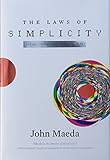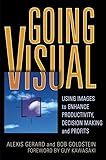I’d have to agree with Virginia Postrel here. The article is a very succinct and thought-provoking summary of Amazon’s plans to make elements of its technology and distribution infrastructure more generally available. Amazon’s plans strike me very much as an example of the real time lags we need to account for when trying to understand technology as a strategic, and frequently disruptive, force.
One of the most interesting business articles I’ve read in a long time. And it’s short….
Here are the core summary grafs from the article.
The repercussions if that happens? Well, look at what’s going on in the media. The Internet created a platform for user-generated content. Now, blogs, videos, music, animation and websites from individuals and small companies constantly challenge traditional media companies. YouTube got bought by Google for $1.7 billion. TV networks are rushing to put content on the Web. Newspapers have lost readers to blogs.
Media are only a fragment of global industry. Imagine that same scenario plowing though one consumer sector after another: food, clothing, cosmetics, sporting goods, musical instruments and so on. It could be a wonderful, vibrant, scary chaos. [Amazon’s new direction: Point, click, make a product to sell to the world]

